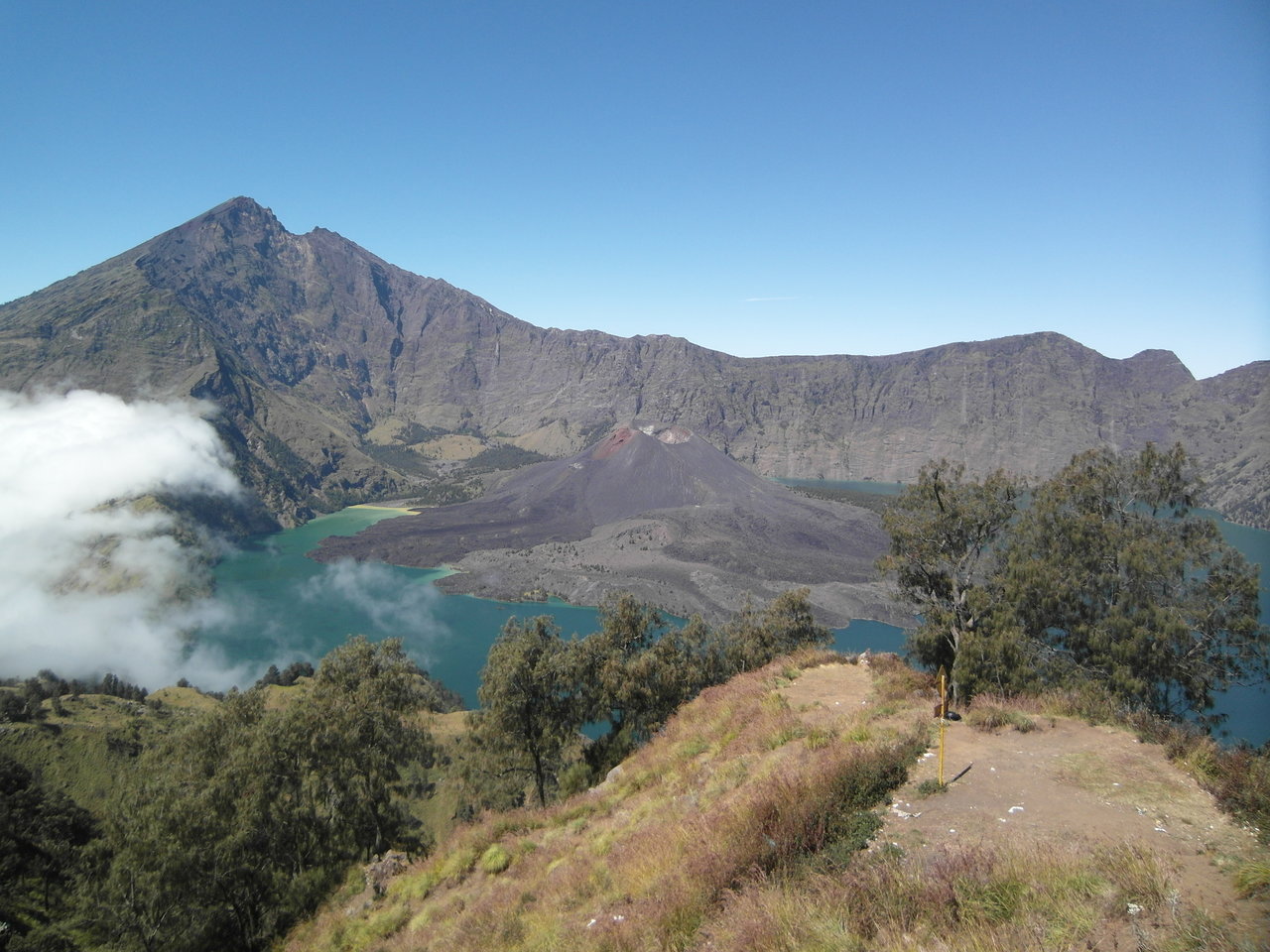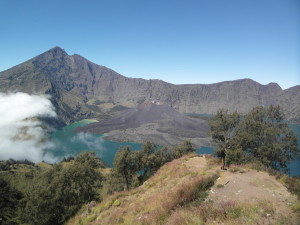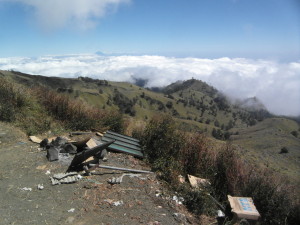For me, the combination of physical exhaustion and raw, natural beauty is captivating. I am rendered useless except to stare. Perhaps my groaning muscles rip all available energy from my mind. Perhaps the monotonous trudge drains my swirling brain of one thought after another; every step dispels a nagging worry, and every strain reveals a song that is stuck in my head. After enough footfalls, I’ve thought through all my thoughts. My mind is left deserted and defenseless.
So I found myself awestruck (dumbstruck? Thunderstruck?) at Gunung Rinjani’s crater rim after a relentless four-hour, 5,000-foot ascent that I began at dawn. Struggling to control rebellious quads, I stumbled to a particularly inviting patch of withered grass and dirt and took a quick breather for the next hour and a half. I was perched on the edge of a six-kilometer-wide caldera lake—a lake that forms in a volcano’s summit when it collapses once the magma inside has been disgorged. Apparently, Rinjani still isn’t ready to throw in the towel, as evident by a slightly smoking cinder cone in the middle of the caldera whose inside rim is colored by telltale yellow sulfur precipitates. This smaller peak is appropriately called Gunung Baru—“Mount New”—and has blanketed a section of the lake with dusty, black-and-rust lava flows. Towering above Gunung Baru is the caldera’s crown of rim peaks, with Rinjani reigning as undisputed king.
As I gradually recovered from my stupor, I wandered around the crater rim and noticed a disconcerting amount of trash. I saw metal shells of toilets with doors long since fallen off, leaving trekkers to dig holes at random (spelling trouble—or giardia—for the spring water still used in the lower campsites). Soiled toilet paper was stuck in branches of nearby shrubs (“tissue flowers,” as Ed Abbey says), and various aluminum and plastic wrappers littered the ground. Few people were motivated to use the disintegrating trash cans.
It makes sense—generations of Sasak hikers accustomed to banana leaf wrapping were suddenly and unfortunately armed with the most resilient Western packaging. This is compounded by the inevitable drop-off in official interest and financial support as soon as a publicly visible project has been completed. It’s easy to raise money and justify spending when you know the park’s opening ceremonies will be front-page news, but it’s much harder to find millions of rupiah to maintain facilities and collect trash. This means that you’ve got an impending environmental disaster in one of Indonesia’s most impressive national parks.
In this case, tourist money is probably the most likely solution. With the government caught up in more immediate concerns, it’s up to the visitors who, like me, are both amazed and appalled by Gunung Rinjani National Park. The only problem is this puts the decision to “save” a place in the hands of ignorant (but curious and passionate) strangers, not with the communities who know a place’s true value.
I met quite a few tourists who paused beach-driven Bali vacations to spend a few days scrambling around the volcano. Although their passion for the great outdoors might wane as the beachside beer buzz does, their entry fees are at least a small step in the right direction. Maybe a group will encourage their friends to visit. Maybe one or two will feel compelled to donate to the park. Maybe a particularly inspired traveler will carry out a few pieces of garbage. Maybe all of these maybes will add up, and maybe together we can keep Rinjani around for a few more generations.
Ben Sullender is a University of Wisconsin-Madison graduate student and a candidate for a Master of Science in conservation biology and sustainable development. This piece was featured in the 2014-’15 print edition of Souvenirs.



